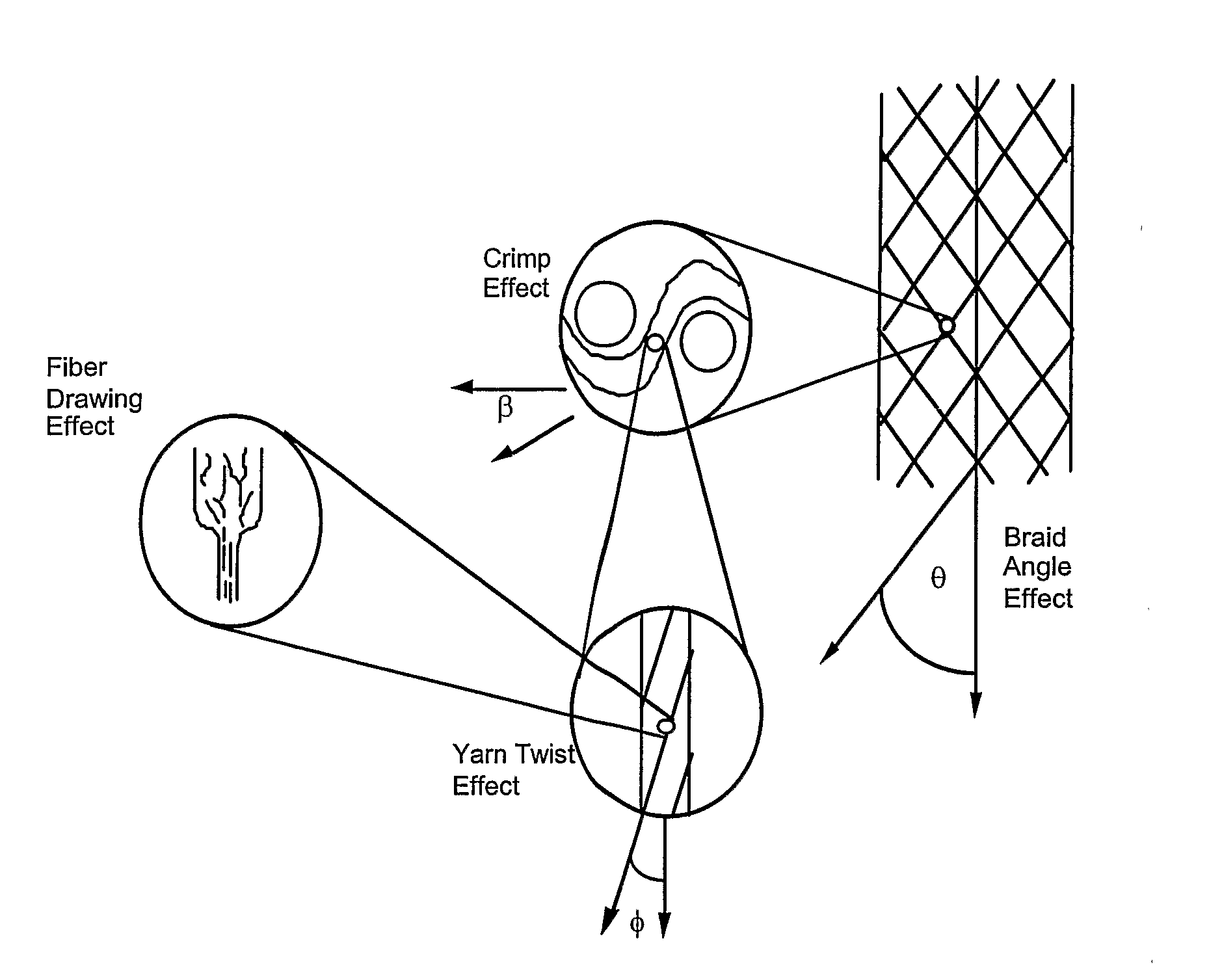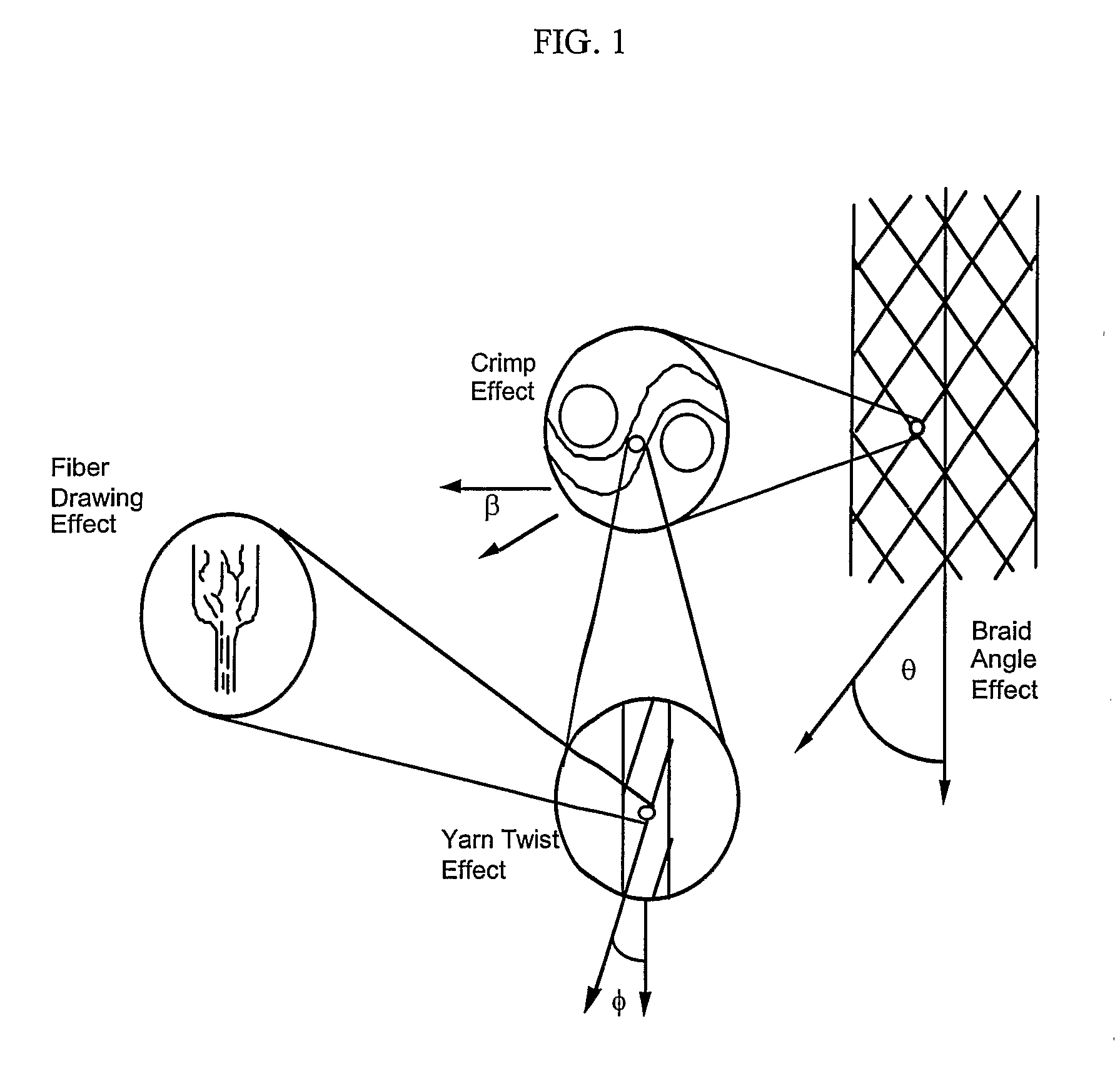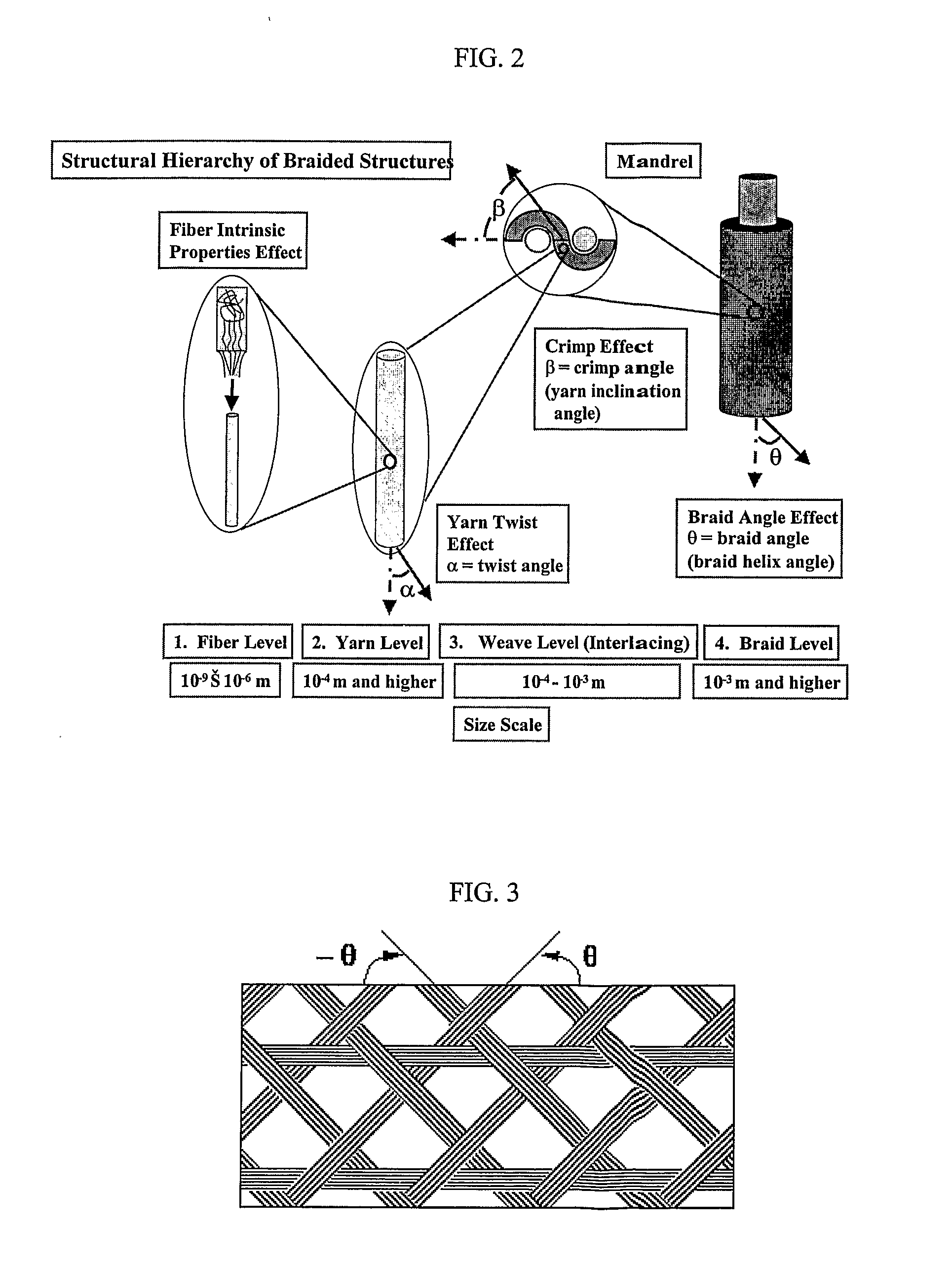Gene and Cell Delivery Self Expanding Polymer Stents
a polymer stent and gene technology, applied in the field of expandable vascular repair devices, endoprosthesis devices or stents, can solve the problems of difficult deployment, blood vessel rupturing threat, and stiff blood vessel stiffness
- Summary
- Abstract
- Description
- Claims
- Application Information
AI Technical Summary
Benefits of technology
Problems solved by technology
Method used
Image
Examples
example 1
[0141] A braided stent made of polyester monofilaments functionalized by coupling with nanofibers was prepared. A 24-carrier braider was used with a 450° braiding angle. The braided stent on a mandrel was subjected to a pressure at 0.1 MPa to create impression points or grooves and heat set at 150° C. for one hour and cooled to room temperature. FIG. 7A shows the sent in a deployed or extended position. FIG. 7B shows a polymer stent in a stretched position prior to its placement into a delivery vessel.
example 2
[0142] Bioactive monofilament is prepared by the ultrasonic welding of false twisted yarn (FIG. 8) wherein the nanofiber DNA fibers are fed / wrapped onto the monofilament and thermomechanically bonded together to form an integral linear assembly. The bioactive monofilament can simultaneously serve as a braiding yarn and biomaterial.
example 3
[0143] Placement of nanofiber on expanded stent is shown in FIGS. 9A and 9B. FIG. 9A is showing brading of the stent over a mandrel. The biomaterial in a form of a nanofiber was electrospinned on a rotating braided stent from a spinneret (see FIG. 9B). The nanofiber / monofilament assembly was heat set in the deployed (expanded) form. The biomaterial is DNA.
PUM
 Login to View More
Login to View More Abstract
Description
Claims
Application Information
 Login to View More
Login to View More - R&D
- Intellectual Property
- Life Sciences
- Materials
- Tech Scout
- Unparalleled Data Quality
- Higher Quality Content
- 60% Fewer Hallucinations
Browse by: Latest US Patents, China's latest patents, Technical Efficacy Thesaurus, Application Domain, Technology Topic, Popular Technical Reports.
© 2025 PatSnap. All rights reserved.Legal|Privacy policy|Modern Slavery Act Transparency Statement|Sitemap|About US| Contact US: help@patsnap.com



